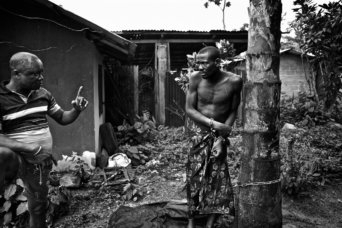- About
- Topics
- Picks
- Audio
- Story
- In-Depth
- Opinion
- News
- Donate
- Signup for our newsletterOur Editors' Best Picks.Send
Read, Debate: Engage.
A damning report from Human Rights Watch has told of disabled people in Zambia being left out of standard HIV testing, treatment and prevention.
Almost two million disabled people are prevented from accessing the HIV services which have significantly improved in Zambia in recent years.
Social stigma towards people with both physical and mental disabilities means a lack of concern for these marginalised people in a system which has been designed without taking into account their particular needs.
They are also discriminated against by an education system which is failing to adequately teach them about HIV prevention in ways that are accessible to people with special learning needs.
The report, titled 'We are also dying of AIDS' "documents the obstacles faced by people with disabilities in both the community and healthcare settings. These include pervasive stigma and discrimination, lack of access to inclusive HIV prevention education, obstacles to accessing voluntary testing and HIV treatment, and lack of appropriate support for adherence to antiretroviral treatment."
Another issue is the added vulnerability of disabled women to intimate partner violence and sexual assault, leaving them particularly at risk of contracting HIV.
The report documents accounts of disabled Zambians facing negative stereotyping about their ability to marry, have children, and many tell of feeling they are perceived as asexual.
One subject of the report told Human Rights Watch, “When you go for VCT [voluntary HIV counseling and testing], you are looked up and down, people say, ‘Why should you be in the line? Who could give you HIV?’ They don’t expect disabled women to be sexually active.”
The stigmatisation of disabled people is by no means limited to Zambia. A 2014 World Press Photo award winner has shone light on the dark trend of abuse of mentally disabled people across Africa.
New Zealander Robin Hammond has spent many years documenting the systematic, sometimes ritualistic mistreatment of these people from all corners of Africa.
See his photography on the World Press Photo website or in the video above.
